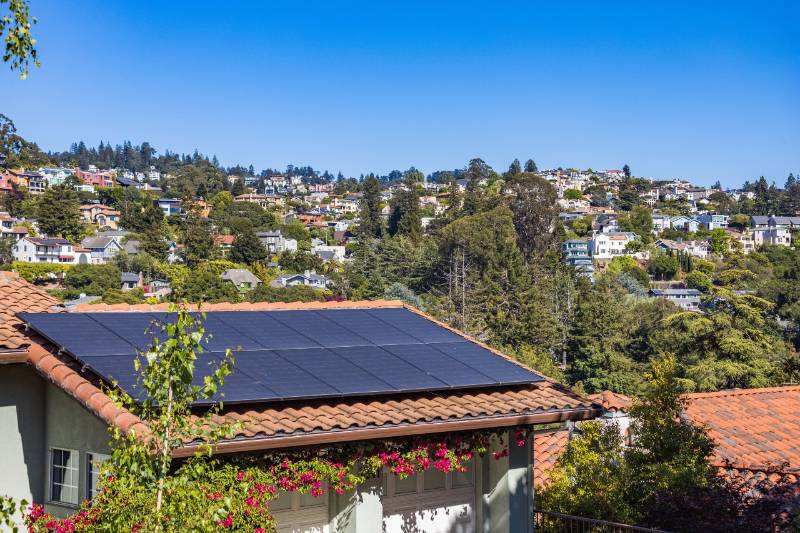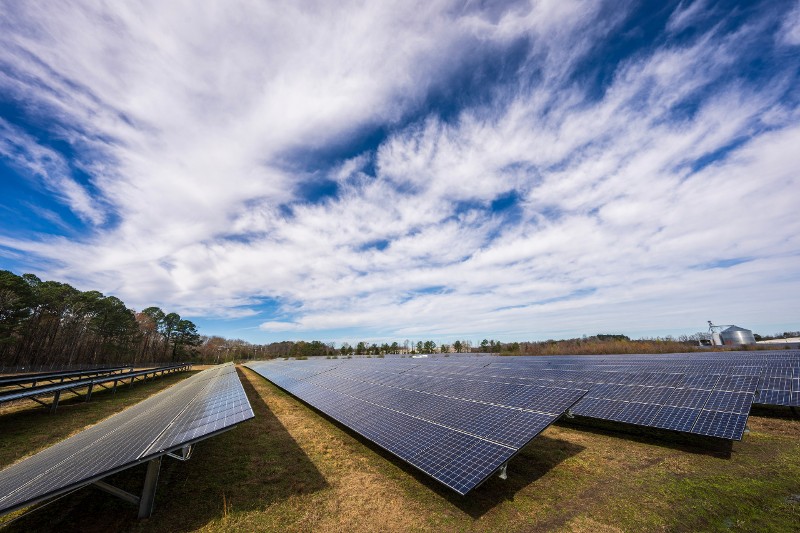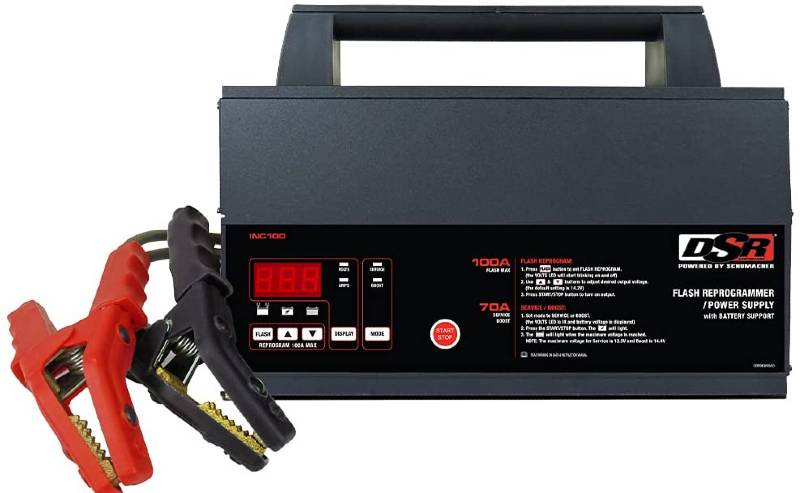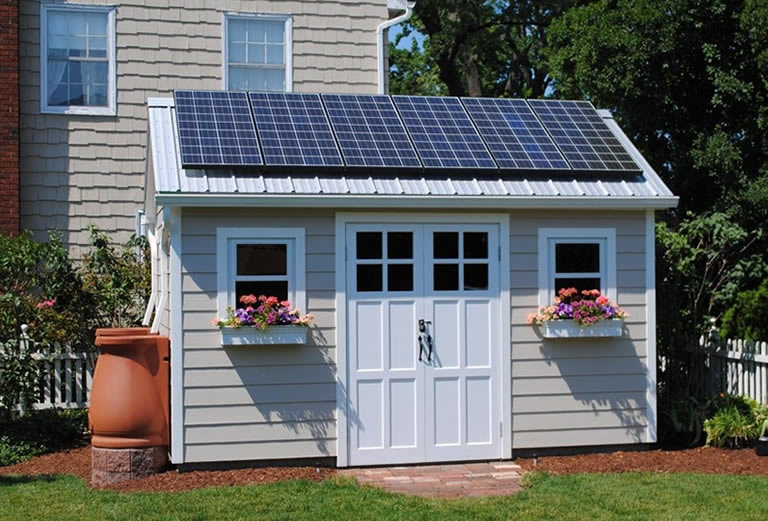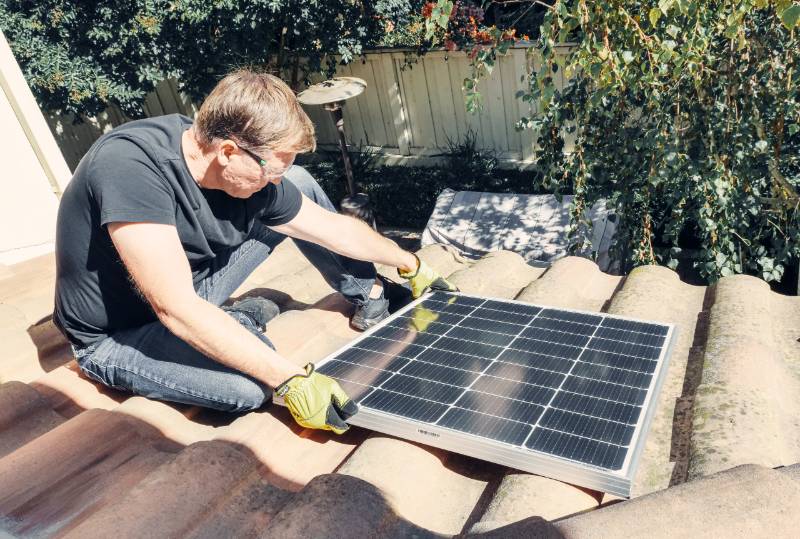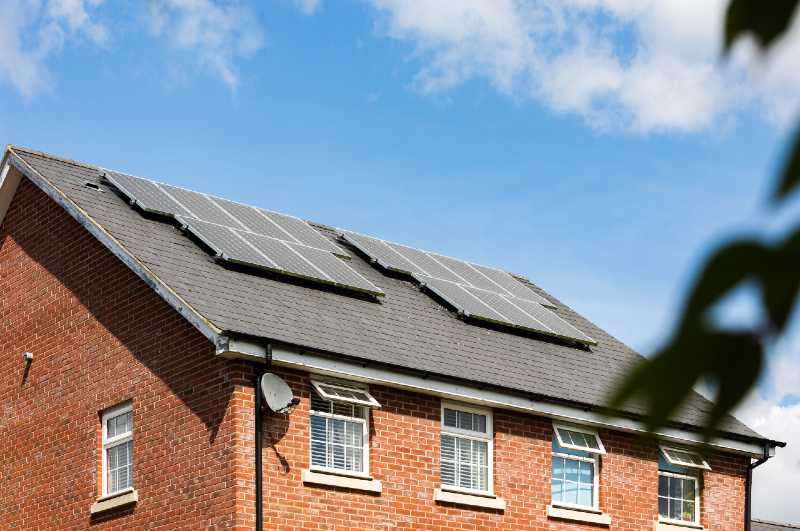Many people are starting to realize the power of solar energy and how it can help reduce their monthly electricity bills.
But what about those who live in mobile homes? Can they benefit from solar panels too?
The answer is a resounding yes. You can install solar panels on a mobile home and enjoy all the benefits of renewable energy.
In this article, I’ll cover the basics of solar panel installation for mobile homes, how to calculate the number of solar panels you need, battery size, and more.
So, without further ado, let’s get started.
Key Takeaways
- You can use solar panels to power your mobile home as long as the roof is structurally sound.
- You should make sure that your state doesn’t have any special laws prohibiting solar panel installations on mobile homes.
- Three solar panels with 300 watts capacity are typically enough to power a mobile home.
- To ensure the solar panels perform at high efficiency, you should direct them to the south and remove any obstructions from their path.
- A 1,120 W inverter is necessary to convert the DC power from solar panels into AC power usable in your mobile home.
- A 12V, 752 Ah battery with 80% depth of discharge can be enough for a small mobile home.
Can You Use Solar Panels for a Mobile Home?
You can use solar panels for a mobile home.
But there are some things you should consider before taking the plunge.
Mobile homes are smaller and lighter than traditional houses, so they require different considerations when installing solar panels.
You’ll need to ensure your roof can support the weight of a solar panel system and that the roof area is large enough to accommodate the number of panels you plan to install.
To be more clear, let’s work with this example.
Assume you need to install 3 solar panels with 300 Watts of power each on your mobile home.
Each panel has dimensions of around 65 inches by 39 inches and weighs around 42 lbs.
To calculate the total weight and area required for the installation:
Weight: 3 x 42 lbs = 126 lbs
Area: 3 x (65 inches x 39 inches) = 7,605 square inches or 52.8 square feet
Of course, this is not an exact calculation, you’ll still need to add some extra weight/area for the mounting hardware, wiring, and inverters.
So, you need to make sure that the structure and the roof joists of your mobile home can support this additional weight and have enough surface area available for the installation
You also need to be aware of any local regulations or building codes that may affect solar panel installation in mobile homes.
Some states require extra steps when installing solar panels on a mobile home, such as obtaining permission from the owner of the park where your mobile home is located.
How to Calculate the Number of Solar Panels You Need for a Mobile Home?
1. Calculate Your Energy Consumption
Before we get into the details of how many solar panels you need, it’s important to first understand your energy needs.
This depends on the number of devices you’re using in your mobile home and how much energy each of them needs.
To better understand your energy needs, you should start by making a list of all the appliances in your mobile home and their respective wattages.
The table below is a sample of the common appliances found in a mobile home and their energy consumption per day:
| Appliance | Number | Wattage/Appliance | Hours of Usage | Total |
| TV | 1 | 80W | 4 | 320Wh |
| Small Refrigerator | 1 | 75W | 8 hours (30% duty cycle) | 600Wh |
| Washing Machine | 1 | 850W | 3 | 2,550Wh |
| LED Lights | 6 | 5W | 8 hours | 24Wh |
| Laptop | 1 | 45W | 4 hours | 180Wh |
| Fan | 2 | 50W | 4 hours | 400Wh |
| Phone Charger | 2 | 5W | 4 hours | 40Wh |
| Wifi Router | 1 | 10W | 7 hours | 70Wh |
| Total = | 4,184Wh |
The result of this calculation shows that the mobile home in our example consumes 4,184 Wh every day.
We’ll be using this figure in the next steps to determine the size of your solar system.
2. Find out Your Peak Sun Hours
The amount of energy your solar system can produce depends on how many hours of sunlight it’s exposed to each day.
However, the panels don’t receive the same amount of sunlight throughout the day.
Sometimes, the solar irradiance can be 300W/m², 400W/m², or even as high as 1000W/m² per hour.
To get an accurate estimate of how much energy your solar system will produce, you’ll need to figure out the peak sun hours in your area.
Peak sun hours refer to the number of hours that your location receives direct sunlight with an irradiance of 1000W/m² per hour.
For example, if your region has 5 peak sun hours per day, your system can produce up to 5 kWh of energy per day.
You can use this calculator from the National Renewable Energy Laboratory (NREL) to find out the peak sun hours in your area.
I live in California, so I’ll use 5.83 peak sun hours in this example.
3. Calculate Your Theoretical Solar System Size
We now have two main factors to determine the theoretical size of your solar system – energy consumption and peak sun hours.
To calculate the size of your solar system, you can use this equation:
The Solar System Size (W) = Electricity Usage (Wh) / Peak Sun Hours per Month (hrs)
In our example, we’ll use 4,184 Wh of energy consumption and 5.83 peak sun hours per day.
Therefore, the theoretical size of our solar system would be:
The Solar System Size (W) = 4,184 Wh / 5.83 hrs/day
Which equals around 718 W or 0.718 kW.
But this is just the theoretical size under perfect conditions.
In reality, you’ll still need to factor in some real-world losses due to shading, dust, and other factors.
4. Factor in Solar System Losses
Any solar system experiences losses due to a variety of factors, such as dust accumulation, shading, thermal losses, and inverter losses.
These losses will directly affect the amount of energy your solar system can produce.
So, you’ll need to factor in these losses when calculating the size of your system.
The solar industry generally recommends adding a 14% safety margin on top of your theoretical requirements to account for these losses.
Using our example, we can calculate the size of our solar system using this equation:
The Real Life Solar System Size (W) = Theoretical Solar System Size (W) x 1.14
Plugging in our example, we get:
The Real Life Solar System Size (W) = 718 W x 1.14
So, the real-life solar system size for our example would be around 818 W.
5. Calculate the Number of Solar Panels
Solar panels are rated by their wattage, which is measured in watts.
Most solar panels available today are rated between 250 and 400 W.
This rated wattage refers to the amount of energy a single panel can produce under every peak sun hour (1000W/m² per hour).
For instance, a 100 W panel can generate 100 Wh of energy for every 1,000W/m² of solar irradiation it receives AKA peak sun hour.
To calculate the number of panels you’ll need for your system, you can use this equation:
Number of Solar Panels = Real Life Solar System Size (W) / Solar Panel Wattage (W)
For our example, we’ll be using a 200 W panel.
Therefore, the number of panels required for our system would be:
The Number of Solar Panels = 818 W / 200 W = ~ 4 panels
This means you’ll need four solar panels with a rating of 200W to generate the amount of energy needed for your system.
Do the Solar Panels Need to Be on a Specific Side of the Mobile Home?
The solar panels should be installed on the side of the home that receives the most direct sunlight.
This will help ensure maximum efficiency and performance from your system.
But what is the best orientation for solar panels?
The ideal orientation for solar panels is to face true south if you live in the Northern Hemisphere and north if you live in the Southern Hemisphere.
The United States is located in the Northern Hemisphere, and since I live in California, the ideal orientation for my panels is true south.
In this part of Earth, the sun rises in the east and sets in the west.
So, it spends most of the day in the southern sky, making it the best option for optimal solar panel performance.
Are There Alternative Places to Install Solar Panels on a Mobile Home?
There are a few alternative places to install solar panels on a mobile home.
If you can’t install the panels on the roof, you can opt for a solar generator for RVs.
Another option is to make use of a ground mount system.
Ground mount systems can be used for mobile homes that don’t have enough roof space or where the roof is unsuitable for installing solar panels.
These systems can be mounted directly on the ground, and they offer adjustable tilt angles so you can maximize your solar panel efficiency.
Honestly, I’m not a big fan of this solution, as it takes away a lot of your home mobility.
What Size Inverter Do I Buy for My Mobile Home Solar System?
Solar panels generate DC current, which can only power DC appliances like lights without an inverter.
Since most home appliances use AC electricity, you’ll need to buy an inverter to convert the DC power from your solar panels into AC power for your home.
The size of the inverter will depend on how much energy your solar system produces and how much energy it needs to supply.
If we talk about a grid-tied system, you will need to multiply the solar DC system size by 1.15 and that will give you the AC inverter rating.
For our example, we can use this equation:
AC Inverter Rating = Solar DC System Size (W) x 1.15
Plugging in our example, we get:
The AC Inverter Rating = 818 W x 1.15 = 940.7 ~ 941 W
But we’re just talking about a small off-grid system running a few lights and appliances.
To calculate the inverter size for a larger off-grid system, you need to add up the wattage of all the appliances you’re planning to use:
Solar Inverter Size (W) = Sum of All Appliance Wattages Running at the Same Time
Solar Inverter Size (W) = 80W + 75W + 850W + 5W + 45W + 50W + 5W + 10W = 1,120 W
Therefore, the size of the solar inverter for our larger off-grid system should be 1,120 W.
Does a Solar Powered Mobile Home Need Batteries?
A solar-powered mobile home needs batteries to store the energy produced by the solar panels.
Batteries are necessary for both grid-tied and off-grid solar systems.
For a grid-tied system, the batteries provide backup power in case of a blackout or power outage.
For an off-grid system, the batteries store the excess energy generated by the solar panels for later use.
And in our case, we’re dealing with a small off-grid system, so batteries are definitely needed.
But what battery size do you need?
The size of the battery bank depends on your solar panel production and your energy needs.
In our example, to calculate the solar panel’s daily output, we can use the following formula:
Solar Panel Daily Output (Wh) = Number of Panels x Rated Power Output per Panel (W) x Peak Sun Hours x (1-0.14)
So, plugging in our example, we get:
Solar Panel Daily Output (Wh) = 3 x 300 W x 5.83 hours x (1-0.14) = 4,512 Wh
Now, we can assume that the battery voltage will be 12V and the Depth of Discharge (DoD) will be 0.5.
Plugging all these values into our equation, we get:
Battery Size (Ah) = 4,512Wh / 12V / 0.5 = 752 Ah
So, the size of the battery bank for our small off-grid system should be 752 Ah.
FAQs
How Many Solar Panels Are Needed to Run a Mobile Home?
You need three, 300W solar panels to run a mobile home. However, this will still depend on your energy needs, peak sun hours, and solar panel efficiency.
Can Solar Panels Be Added to a Mobile Home?
Solar panels can be added to a mobile home, provided the roof is suitable for installation. But if you don’t have enough roof space, or it isn’t suitable, you can always opt for a ground-mount system instead.
Are Solar Panels Heavy for Mobile Homes?
The average solar panel weighs around 42 pounds, which can be heavy for some mobile homes.
But if the roof joists are properly reinforced, then the weight shouldn’t be a problem.
Conclusion
As promised, we have gone through the basics of setting up a mobile home solar system.
We discussed the components you’ll need, how to size your inverter and battery bank, and how many solar panels you’ll need to power your home.
And if you ask me, I’d always recommend hiring a professional to install your solar system to ensure everything is done right.
I hope this article has been helpful. If you have any more questions, feel free to ask in the comments.

